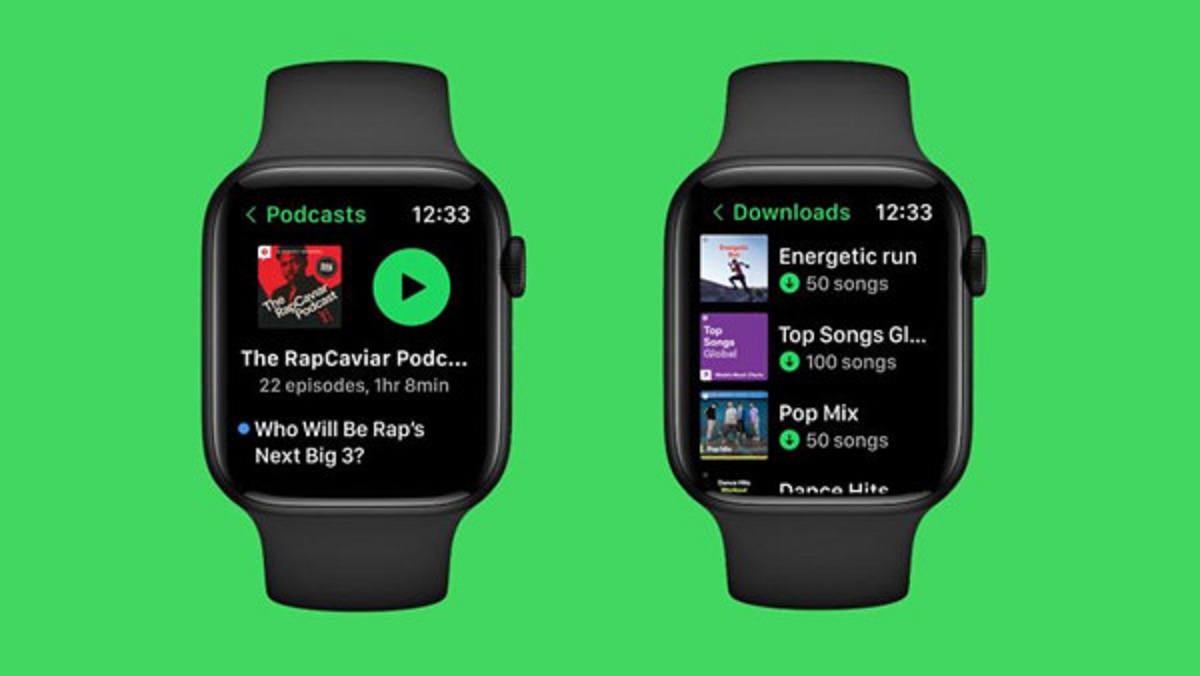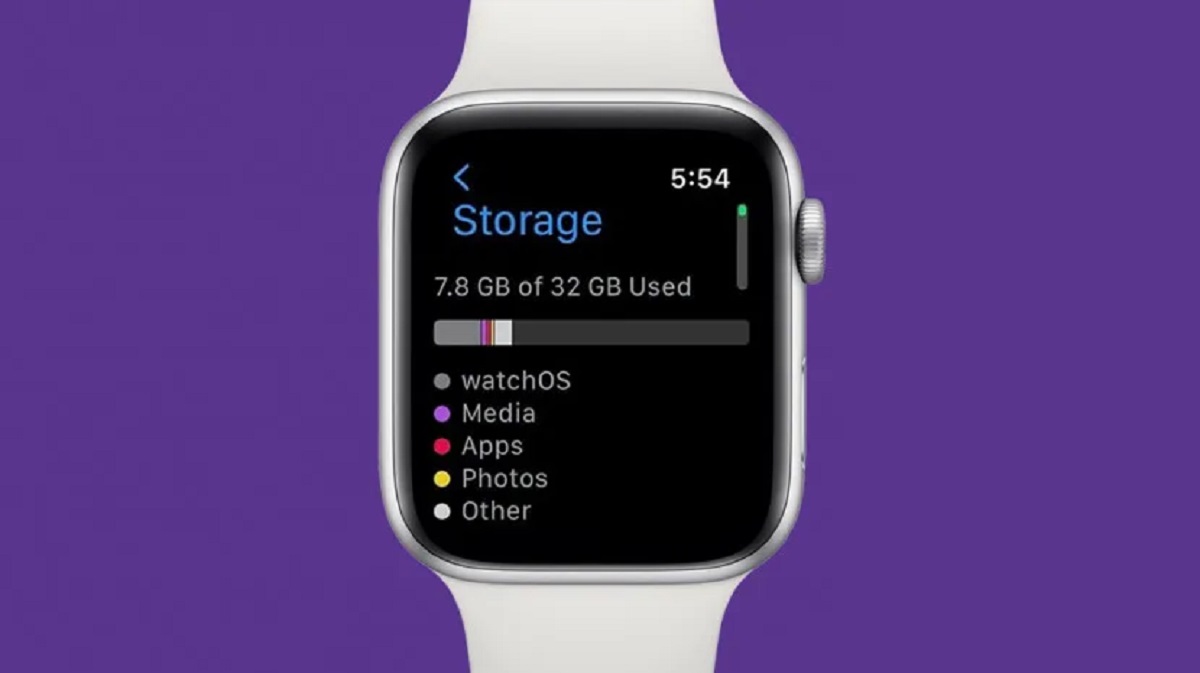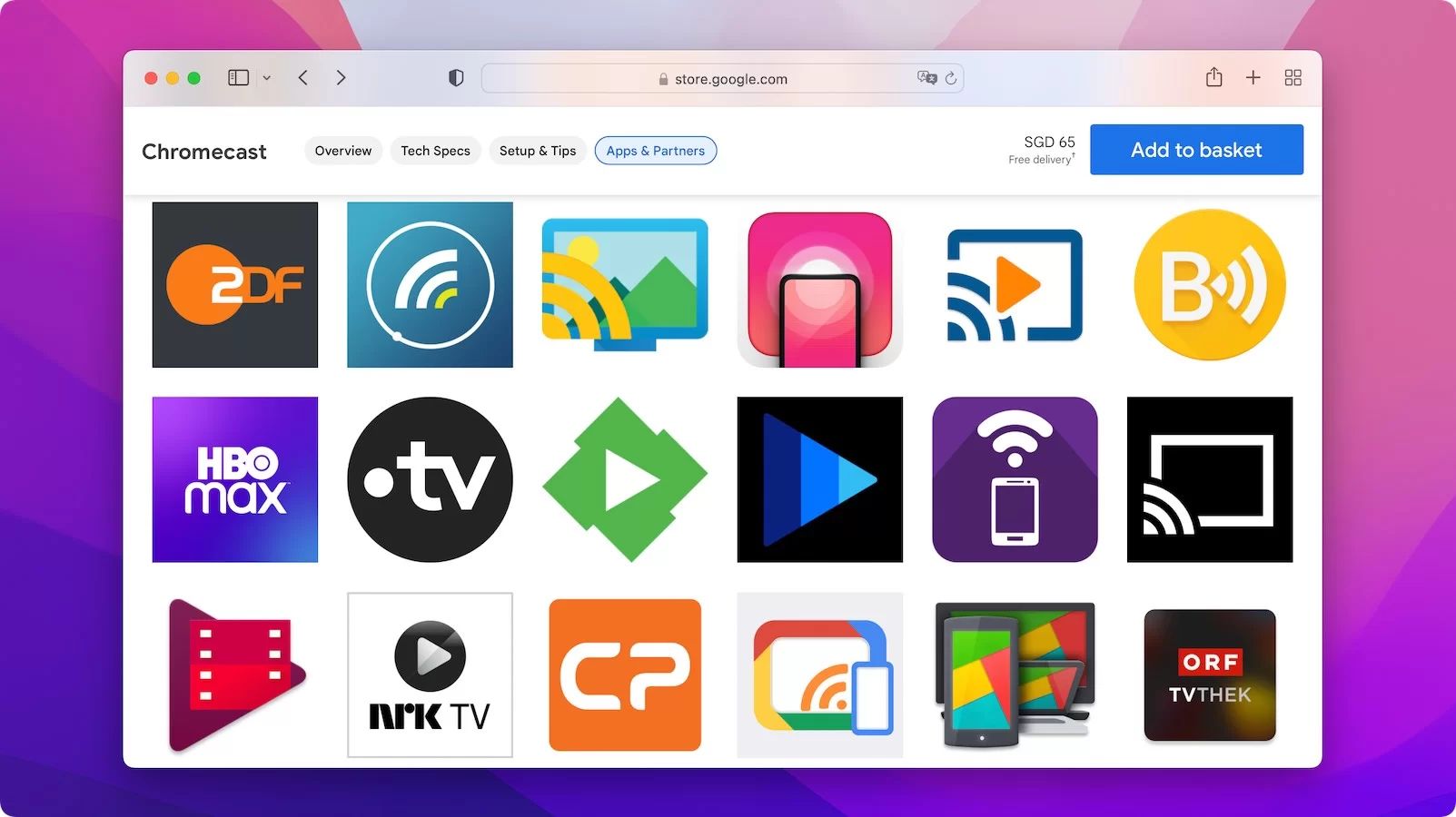Introduction
Podcasts have become increasingly popular in recent years, offering a convenient way to consume audio content on a wide range of topics. Whether you’re interested in news, storytelling, self-help, comedy, or any other subject, there’s likely a podcast out there that suits your interests.
But how do you go about watching a podcast? Unlike traditional videos, podcasts are primarily audio-based, making it essential to understand the different ways to access and enjoy them. In this article, we’ll guide you through the process of finding, accessing, and engaging with podcasts.
With countless podcasts available across various platforms and genres, discovering your favorite podcast can be both exciting and overwhelming. From educational podcasts that explore captivating ideas to entertaining podcasts that will make you laugh out loud, there’s something for everyone.
So, whether you’re new to the podcasting world or looking for ways to enhance your podcast listening experience, read on for a comprehensive guide on how to watch a podcast.
Throughout this article, we’ll cover topics such as finding the right podcast for you, accessing podcasts on different devices, subscribing to your favorite shows, and managing your podcast library. We’ll also discuss ways to optimize your podcast listening experience, whether it’s in the car or during your daily run.
Additionally, we’ll provide tips on engaging with podcasts, such as leaving reviews, interacting with hosts, and participating in discussions. Lastly, we’ll share strategies for discovering new podcasts and recommendations to help you explore new genres and expand your listening repertoire.
By the end of this article, you’ll have a solid understanding of how to find, access, and engage with podcasts, enabling you to dive into the vast world of audio content and enjoy a rewarding listening experience.
Finding a Podcast
With thousands of podcasts available at your fingertips, finding the right one can seem like a daunting task. However, there are several effective ways to discover podcasts that align with your interests:
- Browsing podcast directories: Podcast directories such as Apple Podcasts, Spotify, and Google Podcasts offer extensive collections of podcasts across various genres. These directories allow you to search by category, topic, and keywords, making it easier to find podcasts that cater to your specific interests.
- Seeking recommendations: Ask friends, family, or colleagues if they have any podcast recommendations. Personal recommendations can provide valuable insights into podcasts you may not have discovered on your own. Additionally, online communities and social media platforms often have dedicated spaces for users to share their favorite podcasts.
- Exploring curated lists: Many online publications and media outlets compile curated lists of the best podcasts in different categories. These lists can be an excellent starting point for finding popular and highly recommended shows in specific genres.
- Following podcast networks: Podcast networks, such as Radiotopia and Gimlet, are home to multiple shows on various topics. By exploring the shows offered by these networks, you can discover new podcasts and ensure a consistent level of quality across different programs.
- Utilizing podcast discovery platforms: There are dedicated podcast discovery platforms, such as Podchaser and Listen Notes, that provide advanced search and filtering features. These platforms allow you to explore podcasts based on criteria like episode length, release date, and guest appearances.
Remember, finding a podcast that resonates with you may require some experimentation. It’s okay to try out different shows and genres until you find the ones that captivate your interest.
Once you’ve identified a podcast you want to explore further, take the time to read the show’s description and listen to a few episodes. This will help you determine if the content, style, and hosts align with your preferences.
By utilizing the numerous resources available and adopting an open mind, you’ll be well on your way to finding a podcast that entertains, educates, and inspires you.
Accessing the Podcast
Now that you’ve found a podcast that piques your interest, it’s time to learn how to access it. There are several ways to access podcasts, depending on your preferred device and listening preferences:
- Podcast Apps: The most common method of accessing podcasts is through dedicated podcast apps. These apps, such as Apple Podcasts, Spotify, and Google Podcasts, allow you to search for specific podcasts, subscribe to them, and stream or download episodes for offline listening. Simply download a podcast app onto your device, create an account (if necessary), and start exploring the wide world of podcasts.
- Podcast Websites: Many podcasts have their own dedicated websites, where you can listen to episodes directly from your web browser. These websites often provide additional information about the podcast, such as episode descriptions, show notes, and links to related resources.
- RSS Feeds: Podcasts use RSS (Really Simple Syndication) feeds to distribute their episodes. If you prefer to use a different app or want more control over your podcast listening experience, you can manually add the podcast’s RSS feed to your preferred podcast player or RSS reader. This allows you to access and listen to episodes without relying on a specific podcast app.
- Smart Speakers: If you own a smart speaker, such as Amazon Echo or Google Home, you can easily access podcasts using voice commands. Simply ask your smart speaker to play a specific podcast or request episodes based on a particular topic. This hands-free approach makes it convenient to enjoy podcasts while you go about your daily activities.
It’s important to note that podcast accessibility may vary depending on the platform and app you choose. Some podcasts may be exclusively available on certain apps or platforms, while others may have a wide distribution across different platforms.
When accessing podcasts, consider factors such as ease of use, user interface, personalized recommendations, and available features. Each platform and app has its own unique benefits, so it’s worth exploring different options to find the one that suits your preferences best.
No matter how you choose to access podcasts, the key is to ensure a smooth and seamless experience that allows you to fully immerse yourself in the audio content.
Now that you understand the various methods of accessing podcasts, let’s move on to the next step: choosing the right device for your podcast listening needs.
Choosing the Right Device
When it comes to enjoying podcasts, having the right device can significantly enhance your listening experience. Whether you prefer convenience on-the-go or a more immersive home setup, here are several options to consider:
- Smartphones: Smartphones are a popular choice for accessing podcasts due to their portability and convenience. With dedicated podcast apps available for both iOS and Android devices, you can easily stream or download episodes, create playlists, and listen to your favorite shows wherever you go.
- Tablets: If you prefer a larger screen and a more visual experience, tablets offer an excellent way to enjoy podcasts. With their larger displays, you can easily navigate through podcast apps, read show notes, and view episode artwork.
- Computers: Computers provide a more comprehensive and versatile podcast listening experience. Whether you prefer a desktop or laptop, accessing podcasts through a web browser or dedicated podcast software allows you to take advantage of larger screens, advanced playback controls, and the ability to multitask while listening.
- Smart Speakers: Smart speakers, such as Amazon Echo, Google Home, or Apple HomePod, have become increasingly popular for podcast consumption. With voice commands, you can simply ask your smart speaker to play specific podcasts, control playback, and even adjust volume. Smart speakers offer a hands-free and seamless way to enjoy podcasts throughout your home.
- In-Car Entertainment Systems: Many modern cars come equipped with built-in entertainment systems that support podcast playback. These systems often integrate with smartphone or Bluetooth technology, allowing you to stream podcasts directly through your car speakers. Alternatively, you can connect your smartphone to the car’s audio system via an auxiliary cable or Bluetooth.
- Portable Media Players: If you prefer a dedicated device solely for listening to podcasts, portable media players are a great option. These devices, like the iPod or various other MP3 players, offer offline playback, storage capacity for numerous episodes, and long battery life. They’re ideal for those who want to keep their podcast library separate from their smartphones.
Ultimately, the right device for you depends on your personal preferences, lifestyle, and listening habits. Consider factors such as convenience, mobility, screen size, and compatibility with your preferred podcast apps.
Keep in mind that many podcasts offer cross-device synchronization, allowing you to start an episode on one device and continue where you left off on another. This feature is particularly useful for those who switch between devices throughout the day.
With so many device options available, you can tailor your podcast listening experience to suit your preferences and make the most out of every episode.
Now that you have selected the appropriate device for your podcast needs, the next step is to learn how to subscribe to podcasts and stay up-to-date with your favorite shows.
Subscribing to a Podcast
Subscribing to a podcast is essential to stay updated with new episodes and ensure that you never miss a show from your favorite hosts. Here’s how you can easily subscribe to a podcast:
- Podcast Apps: If you’re using a podcast app like Apple Podcasts, Spotify, or Google Podcasts, searching for a podcast and opening its page will typically display a “Subscribe” or similar button. By clicking on this button, you’ll automatically subscribe to the podcast, and new episodes will be added to your library as they are released.
- RSS Feeds: If you prefer to use an external podcast player or RSS reader, you’ll need the podcast’s RSS feed URL. Most podcasts display their RSS feed address on their website or in the podcast’s description. To subscribe, copy the RSS feed URL and add it to your preferred podcast player or RSS reader by following the app’s instructions.
- Smart Speakers: With smart speakers, subscribing to a podcast is as easy as saying a voice command. Simply ask your smart speaker, “Subscribe to [podcast name]” or “Add [podcast name] to my library,” and it will automatically subscribe you to the podcast.
Subscribing to a podcast allows you to receive new episode notifications, listen to episodes in chronological order, and access your favorite shows more conveniently. It also ensures that you have a consistent stream of content from your preferred podcast creators.
In addition to subscribing, consider exploring other features that podcast apps offer to enhance your listening experience. These may include automatic downloads for offline listening, customizable playlists, recommendations based on your listening habits, and the ability to mark episodes as played or save them for later.
Remember, subscriptions are not permanent, and you can always unsubscribe from a podcast if you find it no longer aligns with your interests or if your podcast library becomes too overwhelming. Regularly reviewing your subscriptions and removing podcasts that no longer resonate with you is a great way to keep your podcast feed fresh and enjoyable.
Now that you know how to subscribe to podcasts, let’s delve into the difference between downloading and streaming podcast episodes.
Downloading vs. Streaming
When it comes to listening to podcasts, you have the option to either download episodes or stream them online. Understanding the difference between downloading and streaming can help you choose the best method for your podcast listening needs:
Downloading: Downloading podcast episodes means saving them onto your device for offline listening. When you download an episode, it is stored locally on your device, allowing you to access it even when you don’t have an internet connection. Downloading episodes can be beneficial if you anticipate being in areas with limited or no internet access, such as during flights or long road trips. Additionally, downloaded episodes can help you save on your data usage if you have a limited cellular data plan. Keep in mind that downloaded episodes take up storage space on your device, so it’s essential to manage your podcast library accordingly.
Streaming: Streaming podcast episodes means playing them directly from the internet without downloading them onto your device. When you choose to stream, you are essentially listening to the episode in real-time through your podcast app or website. Streaming allows for instant access to episodes without requiring prior downloads, saving storage space on your device. It is a convenient option for those who have a reliable and fast internet connection and prefer not to clutter their device with downloaded episodes. However, it’s important to note that streaming relies on a stable internet connection, and interruptions or slow connection speeds can lead to buffering or playback issues.
Choosing between downloading and streaming largely depends on your specific circumstances and preferences. If you have ample storage space on your device, prefer offline listening, or anticipate being in areas with limited internet access, downloading episodes is the ideal choice for you. On the other hand, if you have a reliable internet connection, want to save storage space on your device, or prefer instant access to the latest episodes, streaming is the way to go.
Many podcast apps offer the flexibility to choose between downloading and streaming options for individual episodes or even have an auto-download feature that automatically downloads new episodes of your subscribed podcasts. This way, you can tailor your podcast listening experience to suit your connectivity and storage needs.
Now that you understand the difference between downloading and streaming, let’s explore the world of podcast apps and how they can amplify your listening experience.
Understanding Podcast Apps
Podcast apps are dedicated platforms that allow you to discover, subscribe to, and listen to your favorite podcasts. These apps offer a range of features and functionalities to enhance your podcast listening experience. Here’s what you need to know about podcast apps:
Discoverability: Podcast apps provide you with an extensive catalog of podcasts across various genres and categories. They offer search functionalities, curated lists, and personalized recommendations to help you discover new shows that align with your interests. Whether you’re looking for popular podcasts or niche programs, podcast apps make it easy to find and explore diverse audio content.
Subscriptions and Library Management: Podcast apps allow you to subscribe to your favorite podcasts, ensuring that you never miss an episode from your preferred shows. Subscriptions enable you to receive episode notifications, automatically download new episodes, and have instant access to the latest releases. Additionally, podcast apps provide tools to manage your podcast library, where you can organize your subscriptions, create playlists, mark episodes as played, and save episodes for later listening.
Playback Controls: Podcast apps come equipped with various playback controls to optimize your listening experience. You can adjust playback speed to listen at a faster or slower pace, skip or rewind segments, and set sleep timers to automatically stop playback after a specified duration. These controls provide flexibility and customization options to suit your preferences and listening habits.
Offline Listening and Automatic Downloads: Many podcast apps offer the option to download episodes for offline listening. This feature is especially useful when you’re in areas with limited or no internet connectivity. It allows you to enjoy your favorite podcasts without relying on streaming or a live internet connection. Some apps also provide automatic download features, which automatically download new episodes of your subscribed podcasts, ensuring that you always have fresh content available.
Cross-Device Synchronization: Podcast apps often offer synchronization across multiple devices. This means you can start listening on one device and seamlessly continue from where you left off on another, without losing your progress. Cross-device synchronization allows for a seamless listening experience, regardless of whether you’re on your smartphone, tablet, or computer.
Enhanced Podcast Features: Some podcast apps provide additional features to enhance the listening experience. These may include episode transcripts, show notes, related links, and the ability to interact with hosts and other listeners through comments or discussion forums. These features add depth and engagement to your podcast consumption.
When selecting a podcast app, consider factors such as user interface, ease of use, compatibility with your device, and the availability of features important to you. Experiment with different apps to find the one that aligns with your preferences and provides the best overall listening experience.
Now that you have a better understanding of podcast apps, let’s dive into adjusting playback settings to optimize your podcast listening experience.
Adjusting Playback Settings
Adjusting playback settings on your podcast app allows you to customize your listening experience and optimize it according to your preferences. Here are some commonly available playback settings and how you can utilize them:
Playback Speed: Most podcast apps offer the option to adjust the playback speed, allowing you to listen at a faster or slower pace. Increasing the playback speed can help you consume content more quickly, while decreasing it can aid comprehension or allow for more relaxed listening. Experiment with different speeds to find the setting that suits your preference without sacrificing clarity or enjoyment.
Skip Controls: Podcast apps often provide skip controls, allowing you to jump forward or backward by a predefined time interval (e.g., 15 seconds or 30 seconds). These controls are useful for skipping ads, repetitive content, or segments that don’t interest you. They also enable you to replay or listen again to a specific part of an episode that you found particularly insightful or entertaining.
Sleep Timer: If you enjoy listening to podcasts to help you fall asleep, the sleep timer feature is invaluable. It allows you to set a timer after which the playback will automatically stop. This feature can save battery life on your device and ensure that the podcast doesn’t play throughout the night, interrupting your sleep. Adjust the sleep timer duration to suit your needs and preferences.
Volume Boost: Some podcast apps offer a volume boost feature that enhances the audio output, making it easier to listen to podcasts in noisy environments or when using lower-quality headphones or speakers. Volume boost settings can improve the clarity and overall listening experience, ensuring that you don’t miss any important details.
Notification Settings: Podcast apps allow you to customize notification settings for new episode releases, downloaded episodes, or other podcast-related updates. You can choose to receive notifications for specific podcasts or adjust the frequency and format of notifications to suit your preference. Tweak these settings to strike the right balance between staying informed and managing any potential information overload.
Each podcast app may have a slightly different interface for accessing and adjusting these playback settings. Take the time to explore the options and settings menu of your chosen app to familiarize yourself with the available playback customization features.
Remember, these settings are meant to enhance your podcast listening experience and make it more tailored to your preferences. Experiment with different settings to find the combination that works best for you and enhances your enjoyment of podcasts.
Now that you know how to adjust playback settings, let’s move on to organizing and managing your podcast library effectively.
Organizing and Managing Podcasts
As you dive deeper into the world of podcasts, organizing and managing your podcast library becomes crucial to ensure a seamless listening experience. Here are some tips to help you effectively organize and manage your podcasts:
Create Playlists: Many podcast apps allow you to create playlists to organize your episodes based on different themes, moods, or listening preferences. For example, you can create a playlist for educational podcasts, a playlist for comedy shows, or a playlist for episodes you want to listen to during your workout sessions. Playlists help you easily access specific episodes or curated collections of content.
Mark Episodes as Played: After you’ve listened to an episode, mark it as played in your podcast app. This feature helps track your progress and ensures that you don’t accidentally listen to the same episode multiple times. Marking episodes as played also allows you to keep your library organized and easily find the episodes you haven’t listened to yet.
Save Episodes for Later: Sometimes, you may come across interesting episodes that you want to listen to but don’t have the time or inclination at the moment. Instead of leaving them unsubscribed, utilize the “save” or “bookmark” feature available in most podcast apps. This way, you can easily access the episodes later and avoid cluttering your main library with episodes that you’re not ready to listen to just yet.
Unsubscribe from Unused or Uninteresting Podcasts: Regularly review your podcast subscriptions and unsubscribe from shows that no longer align with your interests or don’t captivate you anymore. Removing unused or uninteresting podcasts from your library helps declutter and focus on the shows that truly engage and entertain you. It also ensures that you have an updated and curated podcast feed.
Take Advantage of Sorting and Filtering Options: Utilize the sorting and filtering options provided by your podcast app to arrange your episodes based on different criteria. You can sort episodes by release date, duration, or alphabetical order, allowing you to find the episodes you want to listen to quickly. Filtering options can help narrow down your library based on various parameters like unplayed episodes, download status, or show categories.
Regularly Update Podcast App and Back Up Your Data: Keep your podcast app updated to ensure that you have access to the latest features, bug fixes, and security enhancements. Additionally, consider backing up your podcast app data, including your subscriptions, playlists, and episode progress. This way, if you switch devices or accidentally delete the app, you can easily restore your customized podcast settings.
With an organized and well-managed podcast library, you can have a seamless and enjoyable listening experience, easily discover new episodes, and stay on top of your favorite shows.
Now that you have a grasp on organizing and managing your podcasts, let’s explore how to listen to podcasts in your car, making your commute or road trips more entertaining.
Listening in the Car
Listening to podcasts in the car is a great way to make your commute or road trips more enjoyable and productive. Here are some tips for seamlessly incorporating podcasts into your car rides:
Bluetooth Connection: If your car is equipped with Bluetooth connectivity, you can easily connect your smartphone to the car’s audio system wirelessly. This allows you to stream podcasts directly from your preferred podcast app without the need for any additional cables.
Auxiliary Cable: If your car doesn’t have Bluetooth connectivity, you can use an auxiliary cable to connect your smartphone directly to the car’s audio system. Simply plug one end of the auxiliary cable into the headphone jack of your phone and the other end into the auxiliary input of your car’s audio system. This enables you to stream podcasts from your device through the car’s speakers.
USB Connection: Some newer car models offer USB ports that allow you to connect your smartphone or media player directly to the car’s audio system via USB cable. This provides a reliable and direct connection for playing podcasts in your car.
CarPlay or Android Auto: CarPlay for Apple devices and Android Auto for Android devices provide seamless integration between your smartphone and the car’s infotainment system. These systems allow you to access and control your podcast app through the car’s touchscreen display or voice commands, ensuring a safe and user-friendly experience while driving.
Offline Listening: If you have limited or no internet connectivity while driving, make use of the offline listening feature available in most podcast apps. Before you hit the road, download your favorite podcast episodes while connected to a Wi-Fi network. This way, you can enjoy your podcasts uninterrupted, even in areas with poor or no cellular data coverage.
Keep Your Focus on the Road: It’s crucial to prioritize safety while enjoying podcasts in the car. Set up your desired playlist or episode before you start driving to minimize distractions. Use voice commands or steering wheel controls, if available, to manage playback and make adjustments without taking your hands off the wheel or eyes off the road. Remember, your safety and the safety of others on the road should always be the top priority.
Listening to podcasts in the car not only helps pass the time during long drives but also allows for personal growth, entertainment, and staying informed. It’s an excellent opportunity to turn your travel time into a valuable and enriching experience.
Now that you know how to listen to podcasts in your car, let’s explore ways to engage with podcasts and become an active participant in the podcasting community.
Engaging with Podcasts
Engaging with podcasts goes beyond simply listening to the episodes. It allows you to become an active participant in the podcasting community and further enrich your experience. Here are some ways to engage with podcasts:
Leave Reviews and Ratings: Consider leaving reviews and ratings for podcasts that you enjoy. Reviews provide valuable feedback to podcast creators and help potential listeners gauge the quality and relevance of the show. By sharing your thoughts and opinions, you can contribute to the podcasting community and support your favorite podcasts.
Interact with Podcast Hosts: Many podcast hosts are active on social media platforms or have dedicated websites where they engage with their audience. Don’t hesitate to reach out to hosts, ask questions, share your thoughts on specific episodes, or request topics for future episodes. Engaging with podcast hosts can create a sense of connection and foster a community around the show.
Participate in Discussion Forums: Some podcasts have dedicated discussion forums or online communities where listeners can interact with each other, share insights, and discuss episodes. Joining these forums allows you to connect with like-minded individuals who share your interest in the podcast’s subject matter. It’s an opportunity to learn from others, gain different perspectives, and develop relationships with fellow listeners.
Share Episodes with Others: If you come across an episode that you find particularly interesting or insightful, consider sharing it with your friends, family, or colleagues who might also enjoy it. Sharing episodes through social media platforms, messaging apps, or even in-person conversations can spark discussions and introduce new listeners to podcasts they might not have discovered otherwise.
Support Podcasts: If you have the means and desire, consider supporting your favorite podcasts financially. Many podcasts offer memberships, merchandise, or exclusive content for their supporters. Supporting podcasts helps sustain their production, encourages the creators to continue producing quality content, and fosters the growth of the podcasting industry as a whole.
Participate in Live Events: Some podcasts organize live events, such as live recordings, meetups, or panel discussions. Attending these events provides an opportunity to meet the hosts and fellow listeners in person, engage in thought-provoking conversations, and deepen your connection with the podcasting community.
Engaging with podcasts allows you to go beyond passive consumption and actively participate in the podcasting experience. It empowers you to connect with creators, fellow listeners, and the content itself, making podcasting a more interactive and immersive medium.
Now that you know how to engage with podcasts, let’s explore ways to discover new podcasts and expand your listening repertoire.
Recommendations and Discovering New Podcasts
Discovering new podcasts and expanding your listening repertoire can be an exciting journey of exploration and self-discovery. Here are some effective ways to find recommendations and discover fresh podcasts:
Ask for Personal Recommendations: Reach out to friends, family, or colleagues who share your interests and ask for podcast recommendations. Personal recommendations often lead to hidden gems and podcasts that align with your specific tastes. You can also join online forums or social media groups dedicated to podcast recommendations and discussions.
Utilize “Listeners Also Enjoyed” or Similar Features: Many podcast apps provide recommendations based on the shows you already listen to. Explore the “listeners also enjoyed” or similar features within your app to discover podcasts that are similar in genre or subject matter to the ones you already love. These curated recommendations can introduce you to new shows and hosts that you may find captivating.
Explore Curated Lists and Podcast Networks: Online publications, media outlets, and podcast networks often curate lists of the best podcasts in various categories or genres. These lists can serve as a valuable starting point to find podcasts that have garnered critical acclaim or have a dedicated following. Additionally, podcast networks are home to multiple shows, making it easier to discover new podcasts by exploring the network’s offerings.
Participate in Podcast Awards and Rankings: Keep an eye out for podcast award ceremonies or rankings that showcase the top podcasts in different categories. These rankings are often determined by industry professionals, critics, and listeners and can introduce you to highly regarded podcasts across a range of topics. Checking out award-winning podcasts is an excellent way to discover shows that offer exceptional content.
Podcast Recommendations from Podcasts: While enjoying your favorite podcasts, listen for recommendations that are often mentioned or endorsed by the hosts. Podcast hosts are often avid podcast listeners themselves, and they often discuss other shows they enjoy or find inspiring. These recommendations can be a reliable source for finding new podcasts that align with your interests.
Utilize Podcast Discovery Platforms: Dedicated podcast discovery platforms, such as Podchaser, Listen Notes, or Discover Pods, offer advanced search and filtering features to help you find new podcasts. These platforms allow you to explore podcasts based on specific criteria like genre, keywords, episode length, or even guest appearances. They provide a comprehensive and curated selection of shows to suit various preferences.
Remember, discovering new podcasts is a personal journey, and it’s okay to experiment with different shows and genres. As with any form of media, the more you explore, the higher the chances of stumbling upon hidden gems and finding podcasts that resonate with your interests and values.
Now armed with various methods of discovering new podcasts, you can continue expanding your podcast library and enjoying a diverse range of audio content.
Conclusion
Podcasts have revolutionized the way we consume audio content, providing a vast array of engaging and informative shows on various topics. By understanding how to find, access, and engage with podcasts, you can unlock a world of knowledge, entertainment, and inspiration. Here’s a recap of what we covered:
First, we explored the process of finding podcasts that resonate with your interests. Whether it’s browsing podcast directories, seeking recommendations from others, or exploring curated lists, there are plenty of avenues to discover new shows that align with your preferences.
We then delved into accessing podcasts through different devices, such as smartphones, tablets, computers, smart speakers, and in-car entertainment systems. Understanding the various options allows you to choose the device that best suits your needs and provides a seamless listening experience.
Subscribing to podcasts ensures that you never miss an episode from your favorite shows. We discussed how to subscribe using podcast apps, RSS feeds, and smart speakers, allowing you to stay up-to-date with new releases.
Downloading and streaming options were compared, highlighting the benefits of each. Whether you prefer offline listening, saving data, or instant access to episodes, understanding the difference empowers you to choose the method that suits your connectivity and storage needs.
We then explored the features and functionalities of podcast apps, such as discoverability, subscriptions, playback controls, offline listening, and cross-device synchronization. These features enhance your listening experience and allow for better organization and management of your podcast library.
Adjusting playback settings allows you to tailor your listening experience by controlling playback speed, utilizing skip controls, setting sleep timers, and enhancing volume. These settings ensure that you can enjoy podcasts in a way that suits your preferences and circumstances.
Effectively organizing and managing your podcast library is essential for easy access to your favorite shows. We discussed creating playlists, marking episodes as played, saving episodes for later, and regularly reviewing and unsubscribing from podcasts that no longer interest you.
We also explored the various ways to engage with podcasts, including leaving reviews, interacting with hosts and fellow listeners, participating in discussion forums, sharing episodes, and supporting podcasts financially. Engaging with podcasts allows you to connect with the community and make your listening experience more interactive and rewarding.
Lastly, we discussed recommendations and methods for discovering new podcasts. From asking for personal recommendations to exploring curated lists, podcast networks, and podcast discovery platforms, there are numerous ways to expand your listening repertoire and find shows that captivate your interest.
With these tools and strategies in hand, you are now equipped to embark on a podcasting journey filled with knowledge, entertainment, and a sense of community. So, dive into the world of podcasts, explore different genres, engage with creators and fellow listeners, and enjoy the rich audio content that awaits you!

























